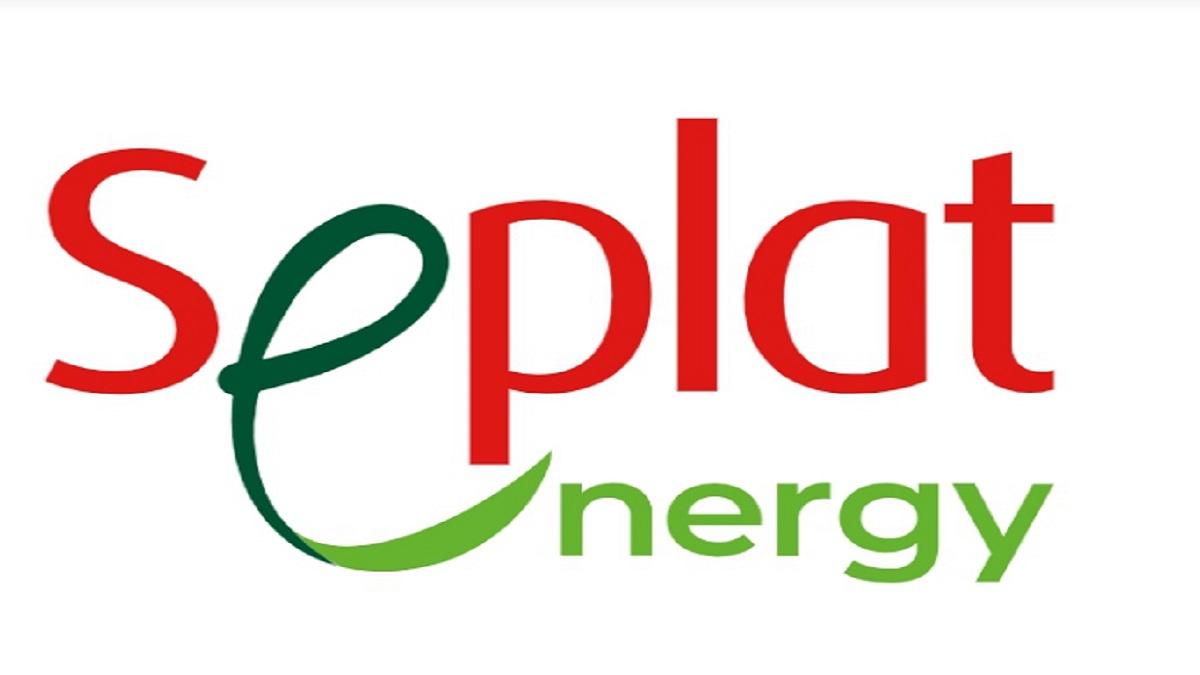Economy
Petrol Importation Gulps N1.199trn in Three Months

By Adedapo Adesanya
Nigeria spent N1.199 trillion on the importation of Premium Motor Spirit (PMS), also known as petrol, in three months, between July and September 2022, according to data released by the National Bureau of Statistics (NBS).
The NBS, in its Foreign Trade Statistics for the third quarter of 2022, disclosed that fuel import for the period July to September 2022 jumped by 16.9 per cent compared with N1.026 trillion spent to import the commodity in the same period in 2021.
The NBS revealed that in the third quarter of 2022, the petrol importation bill was the highest in recent times, compared to N883.565 billion, N371.8 billion, and N532.615 billion spent to import the commodity in the same quarter in 2018, 2019, and 2020, respectively.
The statistics agency noted that petrol imports accounted for 21.2 per cent of Nigeria’s total imports in the third quarter of 2022, compared to 7.7 per cent of total imports in the same quarter in 2021; while in the third quarter of 2020, 2019 and 2018, fuel import accounted for 7.7 per cent, 7.0 per cent, 9.5 per cent and 20.97 per cent, respectively.
Nigeria’s total imports, according to the NBS, in the third quarter of 2022 was N5.664 trillion, compared with N13.241 trillion, while total imports in the same quarter in 2018, 2019 and 2020, respectively, were N4.214 trillion, N3.899 trillion, and N7.593 trillion.
Furthermore, the NBS disclosed that premium motor spirit ranked top among Nigeria’s total imports in the quarter under review, followed by gas oil with N261.595 billion spent on its importation, accounting for 4.62 per cent of total import; while durum wheat imports gulped N252.621 billion, ranking as the third most imported commodity, and accounting for 4.42 per cent of total imports.
Kerosine-type jet fuel, also known as aviation fuel, ranked fourth, as it gulped N93.032 billion of Nigeria’s foreign exchange, accounting for 1.64 per cent of total imports; while used vehicles imports accounted for 1.60 per of total imports, with N90.776 billion, making it to rank the fifth most imported commodity.
Other high-ranking imports were motorcycles, with N59.856 billion, accounting for 1.06 per cent of total imports; filters accounted for 1.05 per cent of total imports, with N59.322 billion; while medicaments import gulped N48.74 billion and accounted for 0.86 per cent of total imports.
Polypropylene import accounted for 0.77 per cent of total imports, with N43.524 billion; gas turbine parts accounted for 0.67 per cent of total imports, with N38.073 billion, while lubricating oil import gulped N33.933 billion, accounting for 0.66 per cent of total import for the third quarter of 2022.
Economy
Seplat Completes Conversion of Onshore Assets to PIA Fiscal Regime

By Adedapo Adesanya
Seplat Energy Plc has completed the conversion of its operated onshore oil and gas assets to the fiscal regime of Nigeria’s Petroleum Industry Act (PIA), marking a major regulatory milestone for the company.
In a statement issued on Tuesday, the dual-listed Nigerian energy firm said its subsidiaries, Seplat West Limited and Seplat East Onshore Limited, finalised the conversion from the former Petroleum Profits Tax framework to the PIA regime following the fulfilment of all technical and regulatory requirements.
The PIA, signed into law in August 2021, was introduced to modernise governance, improve transparency, attract investment, and make Nigeria’s petroleum fiscal framework more competitive globally.
The conversion covers assets previously held under Oil Mining Leases (OMLs) 4, 38, 41 and 53. During the first nine months of 2025, these assets recorded an average working interest production of 42,591 barrels of oil equivalent per day, accounting for approximately 31 per cent of Seplat’s total output.
According to the company listed on both the Nigerian Exchange Limited and the London Stock Exchange, the PIA framework is expected to support increased investment, production growth and improved operational efficiency. The anticipated impact of the conversion had already been factored into Seplat’s medium-term guidance presented at its Capital Markets Day in September 2025.
Seplat noted that it executed Conversion Contracts with its joint venture partners in February 2023 and has since worked closely with the Nigerian Upstream Petroleum Regulatory Commission (NUPRC) to complete the process. New Petroleum Mining Lease (PML) and Petroleum Prospecting Licence (PPL) numbers have now been issued, with PIA-based operations expected to commence from January 1, 2026, subject to regulatory guidance.
Commenting on the development, Chief Executive Officer Roger Brown said the successful conversion reflects the company’s commitment to regulatory compliance and value creation.
“Conversion to the PIA fiscal regime has been an important focus for Seplat, and we are delighted to have delivered, alongside our respective joint venture partners, the conversion of our onshore operated assets within the timeline outlined at our recent Capital Markets Day,” Mr Brown said.
He added that the transition positions the company for improved profitability and stronger cash flow margins in its onshore business.
Seplat also disclosed that it is continuing efforts to convert its offshore assets to the PIA regime, with a target completion date of 2027.
Economy
NASD Index Rises 0.16% on Renewed Investors’ Appetite

By Adedapo Adesanya
The NASD Over-the-Counter (OTC) Securities Exchange rose by 0.16 per cent on Monday, December 22 as investors showed hunger for unlisted stocks.
Trading data showed that the volume of securities traded at the session surged by 532.9 per cent to 12.6 million units from the previous 1.9 million units, as the value of transactions jumped by 64.3 per cent to N713.6 million from N80.3 million, though the number of deals moderated by 13.5 per cent to 32 deals from the 37 deals recorded in the previous trading session.
Infrastructure Credit Guarantee Company (InfraCredit) Plc ended the day as the most traded stock by value on a year-to-date basis with 5.8 billion units sold for N16.4 billion, followed by Okitipupa Plc with 178.9 million units worth N9.5 billion, and MRS Oil Plc with 36.1 million units transacted for N4.9 billion.
InfraCredit Plc also finished the trading day as the most traded stock by volume on a year-to-date basis with 5.8 billion units traded for N16.4 billion, trailed by Industrial and General Insurance (IGI) Plc with the sale of 1.2 billion units for N420.7 million, and Impresit Bakolori Plc with a turnover of 537.0 million units valued at N524.9 million.
The unlisted securities market printed a price loser, FrieslandCampina Wamco Nigeria Plc, which dropped 20 Kobo to sell at N53.80 per share versus last Friday’s closing price of N54.00 per share.
However, the loss was offset by the trio of NASD Plc, Golden Capital Plc, and UBN Property Plc.
NASD Plc gained N5.00 to close at N60.00 per unit versus N55.00 per unit, Golden Capital Plc appreciated by 77 Kobo to N8.45 per share from N7.68 per share, and UBN Property Plc improved by 22 Kobo to N2.43 per unit from N2.21 per unit.
As a result, the market capitalisation increased by N3.38 billion to N2.125 billion from N2.121 trillion, and the NASD Unlisted Security Index (NSI) grew by 5.65 per cent to 3,552.06 points from 3,546.41 points.
Economy
Nigeria’s Stock Exchange Sustains Bull Run by 0.26%

By Dipo Olowookere
The bulls remained on the floor of the Nigerian Exchange (NGX) Limited on Monday, rallying by 0.26 per cent at the close of transactions.
This was buoyed by the gains recorded by 34 equities on Nigeria’s stock exchange, which outweighed the losses posted by 20 equities, indicating a positive market breadth index and strong investor sentiment.
Aluminium Extrusion gained 9.72 per cent to quote at N13.55, International Energy Insurance improved by 9.69 per cent to N2.49, Mecure Industries rose by 9.64 per cent to N60.30, Royal Exchange expanded by 9.60 per cent to N1.94, and Austin Laz grew by 9.50 per cent to N2.65.
On the flip side, Custodian Investment depleted by 10.00 per cent to N35.10, ABC Transport crashed by 10.00 per cent to N3.15, Prestige Assurance weakened by 7.41 per cent to N1.50, and Guinea Insurance slipped by 7.38 per cent to N1.13.
During the session, investors traded 451.5 million shares worth N13.0 billion in 33,327 deals compared with the 1.5 billion shares valued at N21.8 billion transacted in 25,667 deals in the preceding session, showing spike in the number of deals by 29.84 per cent, and a decline in the trading volume and value by 69.90 per cent and 40.37 per cent apiece.
The first trading session of the Christmas week had Tantalizers as the most active with 50.2 million units sold for N127.5 million, First Holdco transacted 32.6 million units worth N1.5 billion, Access Holdings exchanged 27.3 million units valued at N562.3 million, Custodian Investment traded 22.1 million units for N857.8 million, and Chams transacted 21.3 million units valued at N71.1 million.
When the closing gong was struck at 2:30 pm to end trading activities, the All-Share Index (ASI) was up by 401.69 points to 152,459.07 points from 152,057.38 points and the market capitalisation went up by N256 billion to N97.193 trillion from N96.937 trillion.
-

 Feature/OPED6 years ago
Feature/OPED6 years agoDavos was Different this year
-
Travel/Tourism9 years ago
Lagos Seals Western Lodge Hotel In Ikorodu
-

 Showbiz3 years ago
Showbiz3 years agoEstranged Lover Releases Videos of Empress Njamah Bathing
-

 Banking7 years ago
Banking7 years agoSort Codes of GTBank Branches in Nigeria
-

 Economy3 years ago
Economy3 years agoSubsidy Removal: CNG at N130 Per Litre Cheaper Than Petrol—IPMAN
-

 Banking3 years ago
Banking3 years agoFirst Bank Announces Planned Downtime
-

 Banking3 years ago
Banking3 years agoSort Codes of UBA Branches in Nigeria
-

 Sports3 years ago
Sports3 years agoHighest Paid Nigerian Footballer – How Much Do Nigerian Footballers Earn















